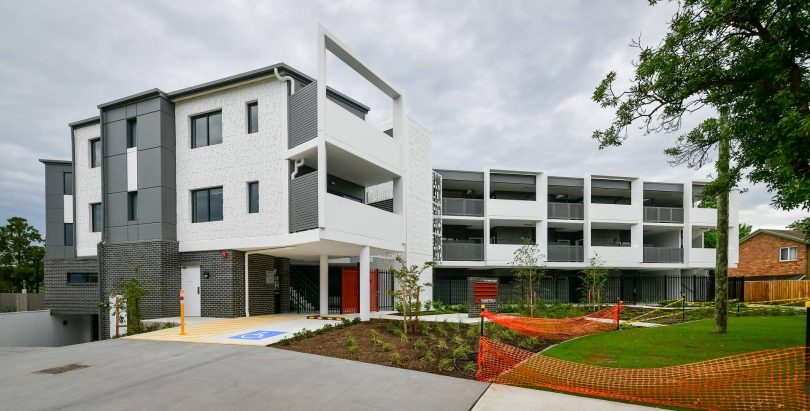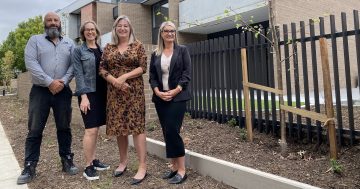
Canberra mother Belinda Nunn (second from left) with her five girls. Photo: Supplied.
The plight of former Barnardo’s mother of the year and mum of seven Belinda Nunn brings into sharp focus the housing crisis facing many Canberrans, particularly families who may not fit easily into apartment living.
With a vacancy rate of just 0.7 per cent and only about 500 properties available to rent in the ACT, the competition for an apartment is intense enough, let alone a house, especially one with four bedrooms or more.
To receive notice at this time fills tenants with dread, and that’s the environment Ms Nunn has entered in the private rental market, and why she has gone to ACT Housing seeking a public housing property.
She is on the priority list, along with 19 others.
This inability of the market to provide sufficient properties at an affordable rent has prompted calls from welfare groups for the ACT Government to step up and do even more than the regularly touted public housing renewal program to fill the gap.
The government says the need for large houses represents only about 8 per cent of total demand, and that there will be 250 such properties built under the 10-year Housing Strategy released in 2018.
But the main focus in the renewal program is on smaller one and two-bedroom apartments, mostly multi-storey dwellings.
The point Ms Nunn raises is that some of ACT Housing’s larger houses are occupied by single tenants or couples whose children have grown up and moved on.
For those who may have raised children in a home and lived in the same neighbourhood for years, building social connections and developing a sense of place, the thought of moving could be difficult, even traumatic, especially if they are getting on in years.
But in the current circumstances, ACT Housing needs to make the most of its resources and manage its tenants more effectively.

A recently completed ACT Housing development in Rowley Street, Dickson.
It does not make sense for someone to be locking up a four to six-bedroom house when there are families in real need.
There should be mechanisms in place in place to review the occupancy of properties so that when circumstances change, tenants can be matched with appropriately sized homes.
Although ACT Housing is assisting tenants to move out of their oversized homes into new housing, such as a new development in Dickson, unofficially, they can be there for life.
It is an invidious position for the government with no easy choices, and plenty of options for bad looks.
And it is no simple matter of reallocating homes because there needs to be a dwelling for people to go to, and with nearly 3,000 on the waiting list and finite resources, that may just not be possible.
But without a massive boost to supply and welfare organisations calculating that the government’s renewal program will still fall short of what is needed, ACT Housing will need to reassess its management policies and make some tough decisions.
It will need to be more proactive about property availability and appropriateness, and inject more agility and flexibility into the program, so families in need can be properly prioritised.
For Ms Nunn, it may be a case of breaking up the family and spreading the older ones around to avoid homelessness, but even then, the chances of securing shelter are not good.
For some families, this will not be an option, and sleeping in the car during a Canberra winter may be their only prospect.
In possibly Australia’s most affluent city, that it has come to this should be our shame.




















